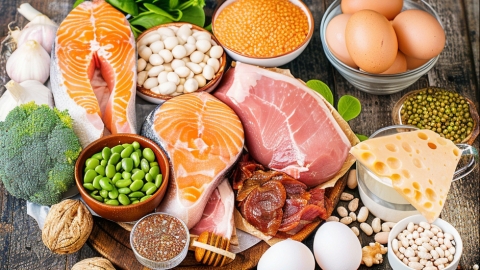What foods should be eaten to improve low fibrinogen levels?
When fibrinogen levels are low, dietary adjustments may help by consuming foods rich in high-quality protein, vitamin K, iron, folate, and vitamin B12. However, diet alone cannot guarantee correction of the condition. Detailed explanations are as follows:

1. Foods rich in high-quality protein: such as eggs, milk, lean meat, and fish. Protein is an essential building block for fibrinogen synthesis. Moderate intake of these foods provides the body with fundamental materials needed for fibrinogen production, thus supporting normal blood clotting function.
2. Foods rich in vitamin K: such as spinach, broccoli, kale, and animal liver. Vitamin K plays a role in the synthesis of clotting factors and supports the proper functioning of fibrinogen. Consuming these foods appropriately can help maintain stability of the coagulation system.
3. Foods rich in iron: such as animal blood, red meat, black fungus (wood ear), and spinach. Iron is a crucial component in blood formation. Normal blood production helps maintain appropriate levels of substances involved in coagulation, thereby indirectly assisting in improving low fibrinogen levels.
4. Foods rich in folate: such as leafy green vegetables, legumes, nuts, and animal liver. Folate participates in cellular metabolism and hematopoiesis. Adequate folate intake supports normal physiological functions and aids in the synthesis of coagulation-related substances.
5. Foods rich in vitamin B12: such as meat, fish, eggs, and dairy products. Vitamin B12 works synergistically with folate to support blood cell formation and nervous system function. Appropriate consumption helps maintain a healthy environment for the synthesis of coagulation-related substances.
It should be noted that food serves only as an adjunctive measure and cannot replace medical treatment. Individuals with low fibrinogen should first seek medical evaluation to determine the underlying cause and receive targeted treatment accordingly.




